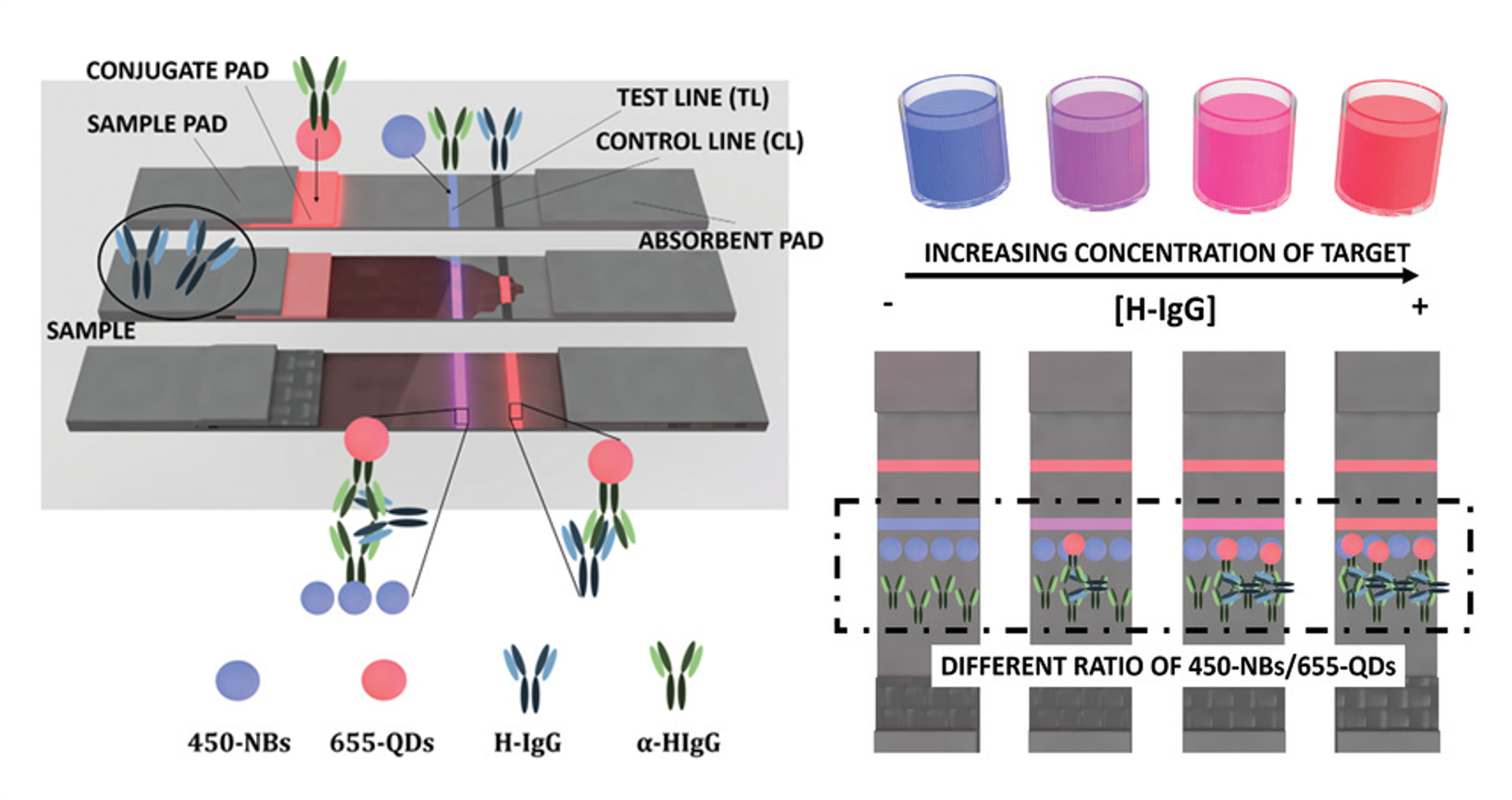Friday, 16 June 2023
A novel multi-colour label approach enhances readout accuracy and adaptability of point-of-care diagnostic tests
A study published in “Advanced Materials Technology” introducing a ratiometric fluorescent method to improve lateral flow immunoassay tests has been selected among the best works published by the journal in 2022. The authors of this research are current and former members of the ICN2 Nanobioelectronics and Biosensors Group.

A research paper presenting a new approach to control and increase the sensitivity of lateral flow assays (LFAs) authored by members of the Nanobioelectronics and Biosensors Group – led by ICREA Prof. Arben Merkoçi— has been selected as one of the best studies published in Advanced Materials Technologies in 2022. This work, whose first author is Dr Amadeo Sena-Torralba and corresponding authors are Dr Claudio Parolo and Prof. Merkoçi, addresses the limitations posed by classic LFAs based on single-colour labels in which read-out is performed by naked-eye or, in some specific applications, via a smartphone.
In fact, thanks to their cost-effectiveness, sustainability, and ease of use, paper-based biosensors have become indispensable tools in point-of-care diagnostic and are also largely employed in environmental applications. However, most LFAs rely on single-color optical labels for qualitative detection, which present two relevant restrictions. Firstly, read-out and comparison of the “intensity” of single-color bands can lead to uncertain or even wrong interpretation of the results, compromising the reliability of the test. Secondly, the lack of precise modulation of sensitivity and dynamic range does not allow for a quantitative measurement of the target analytes at different concentrations.
Addressing these challenges, the authors of the aforementioned study have applied a ratiometric approach which can largely improve the applicability of LFAs for more precise detection. By utilizing red-fluorescent quantum dots (QDs) functionalized with target-specific antibodies and blue-fluorescent nanoparticles as target-independent reporters (immobilized on the test line together with target-specific antibodies), a colour palette is generated on the test line, as opposed to the classic single-colour band.
In the presence of the biomarkers to be detected, the functionalised red-fluorescent quantum dots that have trapped a target will accumulate at the test line. The co-presence at the test line of red- and blue-fluorescent labels produces a band whose colour can range from red, to pink, purple and blue. In addition, since the amount of blue-fluorescent nanobeads anchored at the test line is carefully controlled during the fabrication process, specific colours in this palette can be associated with different target concentrations.
The biosensor that the authors designed applying this method proved to highly simplify the naked-eye readout of LFAs, providing a more sensitive and quantitative (to some extent) detection capability. The possibility of precisely modulating its dynamic range also enables adapting this biosensor to specific application requirements, thus expanding its applicability.
This ratiometric approach offers a simple, clever, cost-effective, and easily tunable solution that overcomes the limitations faced by current LFAs. It has the potential to strongly impact the way paper-based biosensors are designed and developed, saving valuable resources and providing the public with improved and more readily available point-of-care sensors.
Reference article:
Amadeo Sena-Torralba, Helena Torné-Morató, Claudio Parolo,* Saba Ranjbar, Mohammad Amin Farahmand Nejad, Ruslan Álvarez-Diduk, Andrea Idili, Mohammad Reza Hormozi-Nezhad, and Arben Merkoçi,* A Novel Ratiometric Fluorescent Approach for the Modulation of the Dynamic Range of Lateral Flow Immunoassays. Advanced Materials Technologies, Vol 7, Issues 8, 2022. DOI: 10.1002/admt.202101450.

